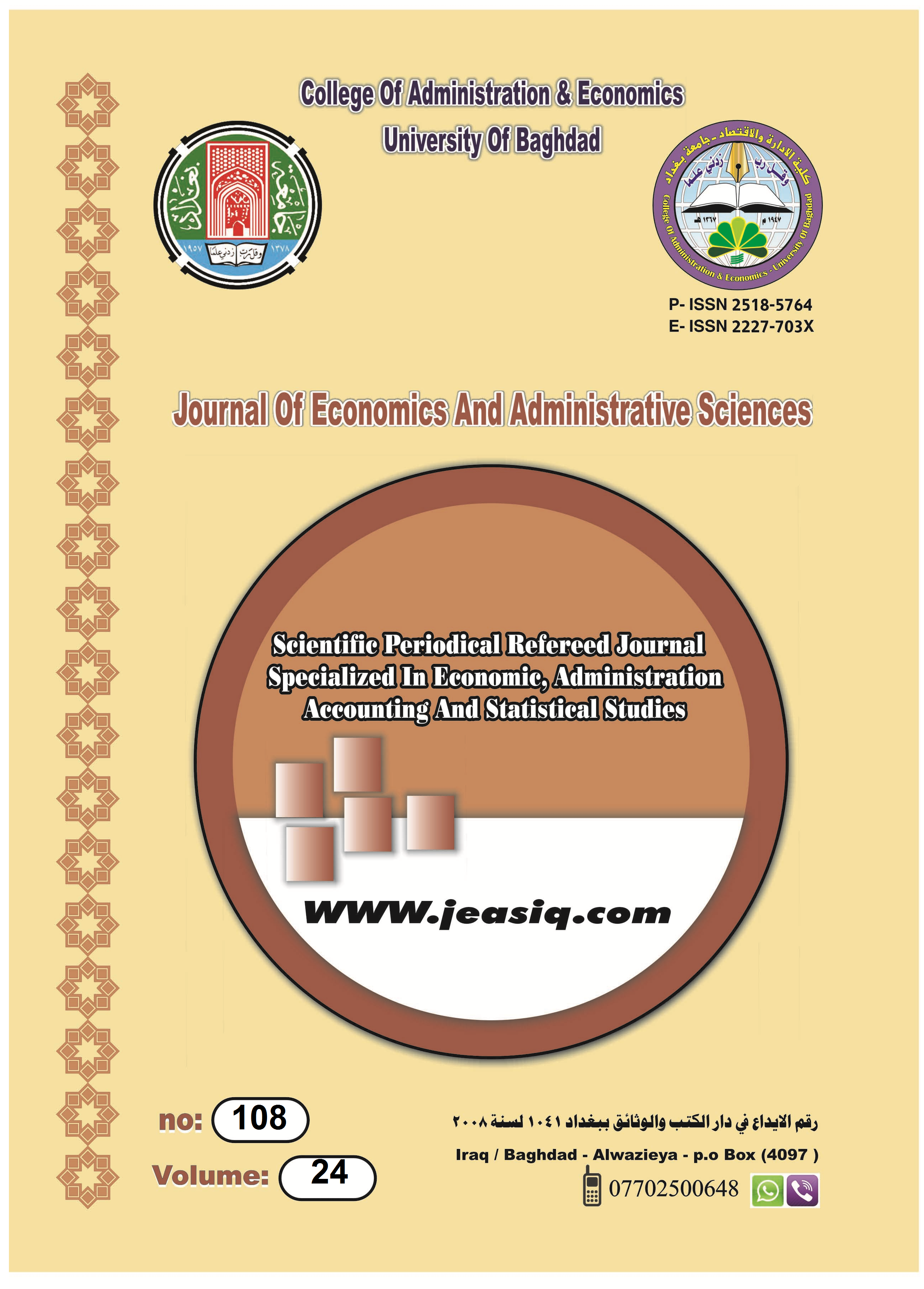strategic direction and its impact on institutional performance An exploratory study in the Directorate General of Curricula
DOI:
https://doi.org/10.33095/jeas.v24i108.1332Keywords:
Strategic direction, corporate performance, , senior management, efficiency and effectivenessAbstract
The objective of the research is to determine the nature of the strategic direction of the institution and its impact on enhancing the indicators of institutional performance. The strategic direction is the main purpose for which it was found. Therefore, it is the main engine for all activities and tasks that the institution can carry out to achieve its objectives within the environment in which it operates. The promotion of corporate performance indicators is one of the major challenges that senior management must address in order to help the organization invest its human resources in the best possible way.
The research problem was determined by means of the intentional sample, consisting of (33) members of the administrative leadership in the Directorate above, The questionnaire was adopted as a tool for obtaining research data, which was prepared based on a number of ready-made measurements after being tested for honesty and consistency. The SPSS program was used to introduce and analyze research data, Statistical tools used in the analysis include: "percentage of frequency, mean, standard deviation, variance coefficient, Spearman correlation coefficient, and simple linear regression"The statistical tools resulted in a number of results, most of which confirmed the existence of a correlation relationship and a significant impact on the strategic direction in enhancing the indicators of institutional performance. Accordingly, the main hypotheses and sub-hypotheses included in the research were accepted. The researcher recommended that the research institution should identify the most important areas During which they promote institutional performance indicators and employ this when formulating a strategic direction.
Downloads
Published
Issue
Section
License

This work is licensed under a Creative Commons Attribution-NonCommercial-NoDerivatives 4.0 International License.
Articles submitted to the journal should not have been published before in their current or substantially similar form or be under consideration for publication with another journal. Please see JEAS originality guidelines for details. Use this in conjunction with the points below about references, before submission i.e. always attribute clearly using either indented text or quote marks as well as making use of the preferred Harvard style of formatting. Authors submitting articles for publication warrant that the work is not an infringement of any existing copyright and will indemnify the publisher against any breach of such warranty. For ease of dissemination and to ensure proper policing of use, papers and contributions become the legal copyright of the publisher unless otherwise agreed.
The editor may make use of Turtitin software for checking the originality of submissions received.


























